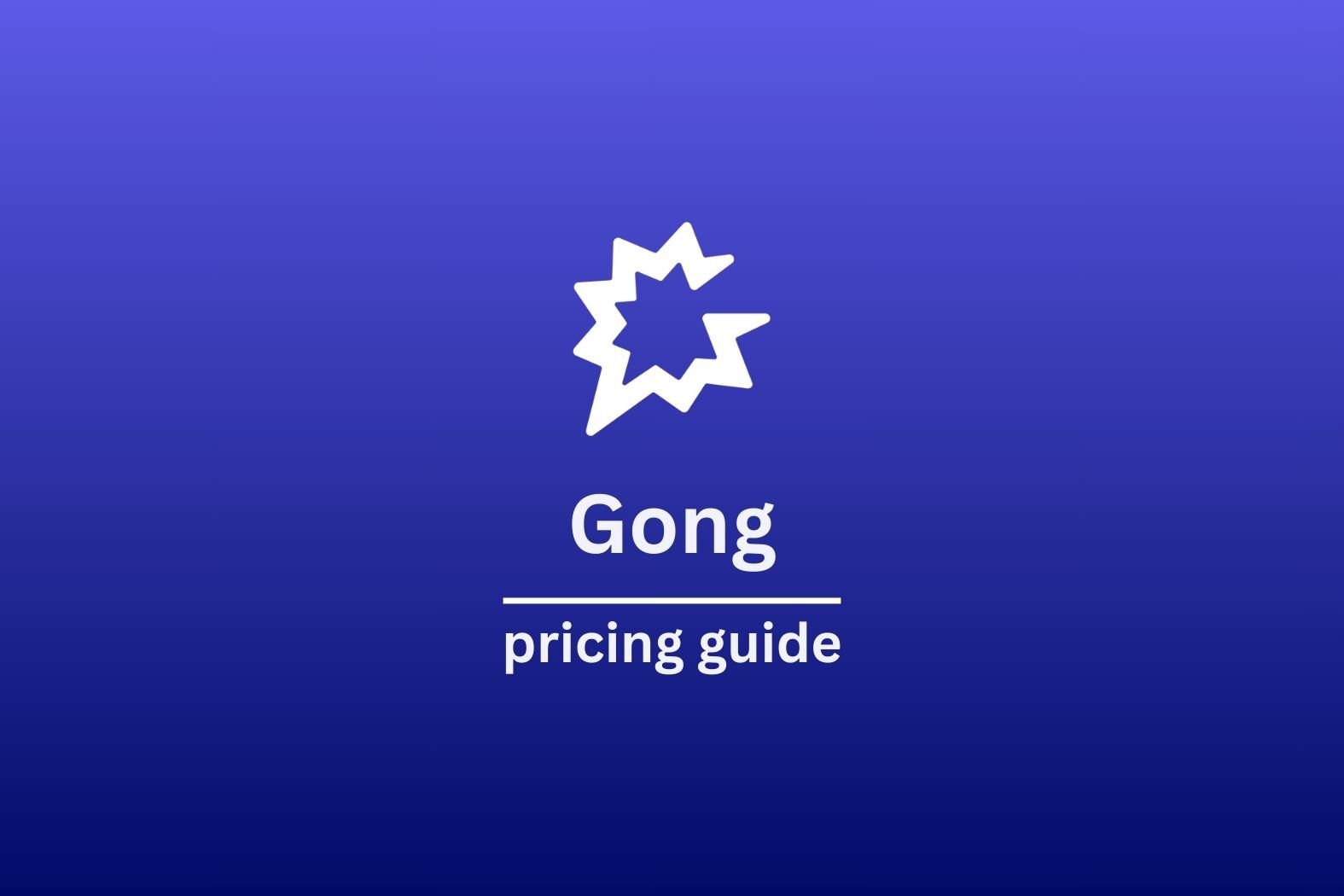Ever heard of the butterfly effect? Wait, you’re thinking – how does this relate to recording sales calls – I know you’re asking. Wait for it.
The butterfly effect is this wild idea that a butterfly flapping its wings on one side of the world can stir up a cyclone on the other side. Now, that’s some serious small-meets-big action! And while that sounds both incredibly cute AND destructive all at once, the underlying message is simply:
Small actions = Big Impact
If you are in sales, then there are likely a lot of BIG things happening in your department constantly. BIG personalities, BIG deals, BIG pressures. There’s rarely time for the teeny tiny things, and getting caught up in the big picture is easy. Plus you often have the honesty and confusion of other departments not really getting the whole “sales process” vibe…
However, there is an entire self-help industry founded on the concept of small incremental changes. James Clear, author of the best-selling book Atomic Habits, encourages “getting 1% better every day”. He asserts that by focusing on improving just a tiny bit each day, the compounding effect will lead to significant improvements over time.
This idea applies directly to sales, where micro-adjustments in strategy, communication, attitude, or client relationship management can transform the bottom line. Just as Clear highlights the power of minor changes to personal habits, so too can salespeople leverage ‘minor’ actions for ‘major’ results.
One overlooked area where these minor changes can come into play is video call recording. It might seem inconsequential to a salesperson’s day-to-day operations, but the reality is far from it. When used strategically, sales call recording can be the butterfly’s wing that leads to the cyclone of success in sales.
With each recorded call, there lies a treasure trove of information that can be analyzed, dissected, and used to improve future sales calls. A small change in tone here, a different phrase there, or even just a different way of presenting a product or service can make a world of difference in the customer’s response.
The Impact of Minor Changes in Sales
Sales recording and analysis are just one little factor in making tiny changes that have significant impacts. Even making tiny changes to your life outside of work can yield results when repeated time and again. When taking a look at the micro, there are a range of things you can uncover:
Getting Enough Sleep
Adequate sleep is crucial for optimal brain function, emotional well-being, and physical health, all of which directly impact your performance in sales. In fact, studies suggest that not getting enough sleep can lead to a 40% reduction in memory function. This can be devastating for a salesperson, as remembering details about a prospect or client can make the difference between a successful deal and a missed opportunity. Small changes in sleep habits, such as establishing a consistent sleep schedule or improving your sleep environment, can greatly enhance your energy levels, focus, and memory retention.
Having a backup plan, like video call recordings, can be a lifesaver in situations where memory fails. These recordings can act as a reliable reference, allowing you to review details from a call that you may have missed or forgotten due to lack of sleep. So, by improving your sleep habits and utilizing tools like call recording, you can ensure that your sales performance remains consistent and robust.
Using the CRM Effectively
Getting the most out of your CRM tools can totally change how you chat with customers – and rack up those sales numbers. I mean, who doesn’t want to increase sales volume!?
Regular data updating and consistent use of CRM features for customer segmentation and personalized communication are small changes that can significantly improve your sales strategy.
Call recordings can even be automatically ported into your CRM system using software such as tl;dv. This means these crucial pieces of data are even easier to maintain and review. This seamless integration of call recordings provides you with a comprehensive understanding of customer interactions and responses, offering invaluable insights to hone your sales approach.

Consistent and effective use of CRM, combined with the insights gleaned from integrated call recordings, can help you better target your prospects, tailor your sales pitches, and ultimately increase sales volume. And yes, we know it’s boring to fill it in, but by doing so, you’re doing your future self (the one who gets that tasty commission check) a favor.
Working On Your Listening Skills
OK, so your prospect may have a passion for classic cars or every single Led Zepplin bootleg there ever was. They may just simply have a monotone voice that makes you snoozy. Whatever it is, it’s your job as a salesperson to LISTEN. Active listening is a biggie in sales because it lets you really get what your clients need.
Small improvements, such as avoiding interruptions, building genuine rapport (seriously, don’t lie about loving Robert Plant’s folk band), and reflecting back on the client’s points for clarity, can have a big impact on customer satisfaction and sales success.
By reviewing sales call recordings, you can observe your own listening habits and identify areas for improvement, both with prospects and in internal team meetings.
Incorporating Storytelling
Weaving a good story into your sales pitch can turn a drab monologue into a riveting blockbuster. Imagine yourself not just as a salesperson but as a director of an Oscar-winning drama. Small tweaks, like delivering your product presentation as if it were a compelling narrative or including actual client success stories, can take your sales pitch from “meh” to “marvelous.”
But remember, no one likes a tall tale – keep it real, genuine, and honest. Because nothing sells like the truth, beautifully told. And just like directors review their footage, analyzing your call recordings can be your backstage pass to improve your storytelling skills. So, grab your director’s chair, unleash your inner Spielberg, and see the impact unfold in your sales process.
Product Knowledge
A salesperson will live and die by their stats and product knowledge. And equally, this is usually where sales can really rile up the rest of the team. A good salesperson will study and learn about their product. What does it do? What is the value? How is this making someone’s life better? They must empathize with their customer if they want to sell it successfully.
Equally, a…less savvy salesperson may make things up to please. They will promise the moon on a stick to their prospect and only to realize later that they’ve invented a completely different feature. This is where dev, product, CSM, and sales tend to fall out.
Ultimately, take that little bit of self-development and growth mindset and put it into knowing your stats and features inside out. Watching back recorded sales calls or even meetings where new features are discussed is a fantastic way to find out more.
Follow-Up Strategy
You’d be shocked at how many interactions it takes to close a deal. From outside the sales bubble, it’s easy to assume it’s a quick meeting, and BOOM, deal! But no, no, there’s a lead time and a careful follow-up strategy. Surprisingly, many salespeople don’t follow up as effectively as they should. They get scared or feel like they are too keen. They feel… icky.
However, making small changes in your follow-up strategy, like personalizing your messages, respecting the prospect’s communication preferences, or adding value with each interaction, can all contribute to improved customer relationships and higher closing rates.
But here’s a golden nugget of a tip – if you’re using a tool like tl;dv to record your Zoom calls and share, it can also notify you when a prospect watches your call back. That’s like getting a sneak peek into their minds, suggesting they’re considering your proposal. This could be your cue to slide into their inbox with a perfectly timed email. Not quite like the cheeky DM slides on social media, but rather a strategic, tactful nudge that shows you’re attentive and on the ball. It’s a bit like having telepathy… but for sales.
Remember, sales is a bit like a game of chess. It’s about strategic moves, and the more information you have, the better your strategy. So, leverage your call recordings, interpret those signals, and make your move when the time is just right.

If you want to master the sales follow-up, there’s a few things you need to know; call recordings are going to be the biggest game-changer.
Adopting Positive Language
In sales, every word matters. Little tweaks in how you talk can help you bond with customers, boost relationships, and can even change the game in sales. It’s very easy, particularly if things aren’t going well or you’re getting that dreaded comparison syndrome, to slip into a negative headspace easily. Even if you FEEL OK, your words may end up saying otherwise. Utilizing tools like video call recording, you can monitor your language use and actively replace any negative phrases with positive ones.
Here are some simple replacements:
- Swap “You must…” or “You need to…” with “You might find it useful…” or “You could consider…”.
- Replace “I don’t know” with “Let me find out for you.”
- Use “The facts suggest” or “Our data shows” instead of, “I think” or “I feel”.
- Choose “And” over “But.” For instance, “That’s a valid point, and another perspective to consider is…”.
- Focus on solutions and possibilities: instead of “We can’t do that because…”, try “What we can offer is…” or “A potential solution could be…”.
Small changes in wording can lead to big changes in tone, mindset (both for you and the prospect) and make two conversations of identical content appear very different. Essentially, words matter! After all, in sales, as in life, it’s not just what you say but how you say it. Through this practice, you’re not just making minor changes – you’re building a positive habit that can majorly influence your sales outcomes.
Conclusion: Small Actions, Big Impact
In the bustling world of sales, amid the flurry of high-stakes deals, ambitious personalities, and daunting pressures, it’s easy to overlook the little things. Yet, as the concept of the Butterfly Effect suggests, seemingly insignificant actions can spark significant impacts. Really affirming James Clear’s concept of “getting 1% better every day” small, consistent improvements will compound over time, transforming your sales approach and ultimately boosting your results AND your bottom lines.
Whether it’s tweaking sleep habits, enhancing listening skills, refining storytelling technique, deepening product knowledge, improving follow-up strategy, or refining language, small adjustments can lead to profound shifts in your sales performance. This can be compounded if you have an entire team of people doing it too.
Consider video call recording – a seemingly minor component of the sales process that, when strategically employed, can provide a goldmine of insights for improvement for every sales rep. Every recorded call is a potential learning opportunity, a chance to fine-tune approach and better resonate with your prospects. Such minor changes, consistently applied, can ripple outwards, leading to a dramatic uplift in your entire department’s sales performance.
Video call recording platforms like tl;dv are instrumental in facilitating these small but powerful changes. You can review your calls, observe your habits, identify areas of improvement, and take advantage of smart features like integration with your CRM system, making the process seamless and efficient.
Embrace the idea of small changes, leverage the power of tools like tl;dv, and get ready to experience the butterfly effect in your sales results. Small actions, when repeated and enhanced by effective tools, can indeed lead to big impacts.
So, what are you waiting for? Grab that butterfly net of yours and start snagging those small wins. Because in the wild world of sales, every bit helps. And who knows? The next flap of a butterfly’s wings might just stir up your biggest sales storm yet.





